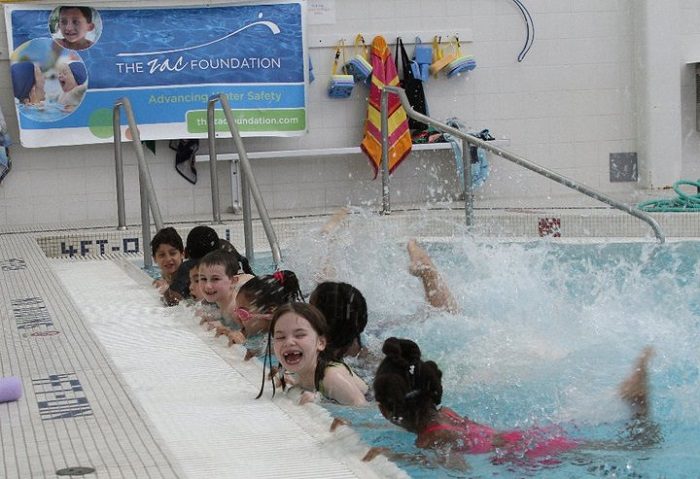Do You Know the ABC&D’s of Water Safety? Be Prepared for Summer with These Tips

By Jennifer
As summer nears, it’s the perfect time to take a few moments to consider these water safety tips from our partner The ZAC Foundation, which is named for Zachary Archer Cohn, who died at the age of 6, after his arm became trapped by the suction of a pool drain. All too often we hear of pool related deaths, which is why speaking with your family about water safety is so important.
First let’s start with some water facts:
- Children between the ages of 1 and 3 represent 64% of reported non-fatal drownings (2012-2014) and 65 percent of fatal drownings (2010-2012), according to CPSC.
- An estimated average of 5,400 children younger than 15 were treated between 2012 and 2014 in emergency rooms for pool- or spa-related submersion injuries every year, with 77 percent of the injured being younger than 5.
- Residential locations dominated incidents involving victims younger than 5 years old; 87 percent of the reported fatalities occurred at residential pools or spas. About 49 percent of the injuries and 75 percent of the fatalities involving children younger than 15 years occurred at a residence.
- African American children between the ages of 5 and 19 are 5.5 times more likely to drown in pools than white children that age, according to the latest data from the Centers for Disease Control and Prevention (CDC).
Do you know the ABC&D’s of water safety? Save
Save
- ADULT: Never let children be alone near or in a pool, ocean, lake, or river. Children should be taught to never swim without an adult present.
- BARRIER: Have a four-sided fence that goes around your pool with a self-locking gate.
- CLASSES: Kids and adults should take safety classes like swim lessons and CPR.
- DRAINS: ALL swimmers should stay away from all pool and spa drains to avoid becoming trapped by the suction.
Growing up in Florida, and now raising our two sons here, we have a plethora of water sources at our disposal year-round including lakes, pools, oceans, and water parks. Because I’m so passionate about water safety both boys have completed several rounds of swimming lessons to be sure they feel comfortable in the water. Some of our favorite family activities are swimming in the neighborhood pool, and visiting our pristine Florida beaches. Because of that, we often remind the boys of simple water safety tips, like ABC&D.
The ZAC Foundation wants to ensure that children and their parents know how to be safer around water through education and advocacy programs. The ZAC Foundation provides a wealth of water safety tips, resources and programming (ZAC Camps) for parents and children of all ages (birth to teenagers). The Foundation targets children ages 5-9 with most of their safety programming.
The Foundation has worked tirelessly to raise awareness about the issue of drain entrapment with state and national policymakers, and is a voice for strong water safety standards presented in the Virginia Graeme Baker Pool and Spa Safety Act (VGB). VBG protects swimmers from the dangers of entrapment through layers of protection.
More about Drain Safety:
What is drain entrapment? An entrapment occurs when a person or an object attached to a person, like ornamentation on a bathing suit or long hair that is not pulled back, is sucked into a pool or spa drain and becomes stuck by the drain’s force. How do you prevent an entrapment? Have drains regularly checked by a licensed maintenance professional. Shut down the pool or spa immediately if the drain cover becomes loose or falls off. No one should enter the pool or spa area until a licensed professional repairs the drain cover. Install an emergency pump shutoff system and anti-entrapment drain covers on your pool systems. For more information, check out The ZAC Foundation’s Drain Entrapment Video.
If you’re looking for a creative way to speak with your kids about water safety, consider this storybook by The ZAC Foundation co-founders The Polar Bear Who Couldn’t, Wouldn’t Swim. The story follows the journey of a young polar bear named Zeke who is afraid of the water and refuses to swim. He leaves his home in search of other animals who do not swim, and ends up finding that he can enjoy the water if he follows the ABC and D’s of water safety, while learning a valuable lesson about facing his fears with a positive attitude.
Before you and your family take that next swim, consider these simple water safety tips!

